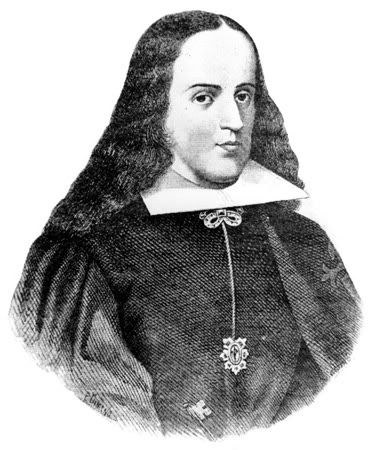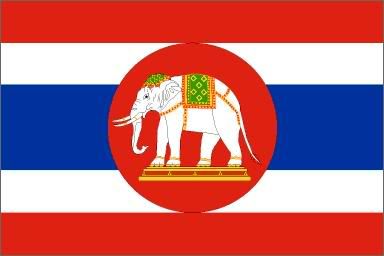THE FOUNDING OF ALBUQUERQUE
Spain's provisional governor of New Mexico broke all the rules when setting up a villa, with no idea the ill-founded community would become the bustling city it is today.
Albuquerque was born April 23, 1706, with the flourish of a quill pen and a dash of exaggeration.From the start, there were great expectations for the little outpost on the Rio Grande.
The brainchild of a Spanish governor who was hoping to curry favor with the powerful Duke of Alburquerque, the villa sounded very impressive in the official letter announcing its founding. Written in Spanish, the letter declared:
"I certify to the king, our lord, and to the most excellent señor viceroy (the Duque de Alburquerque), that I founded a villa on the banks and in the valley of the Rio del Norte (the Rio Grande) in a good place as regards land, water, pasture and firewood,"wrote Don Francisco Cuervo y Valdés, provisional governor of New Mexico.
"I gave it as patron saint the glorious apostle of the Indies, San Francisco Xavier, and called it the Villa of Alburquerque."The new villa occupied an ideal site. It lay astride El Camino Real, the royal road linking Santa Fe with distant Chihuahua and Mexico City. It was on an easy ford of the river to the west, and the Cañon de Carnué (Tijeras Canyon) provided access through the Sandia Mountains to the eastern plains.
But if Cuervo believed he had earned the favor of the Duque de Alburquerque by giving the new settlement his name, he seriously erred. The duke, who presided in Mexico City as viceroy over all of New Spain, was upset.

Don Francisco Fernández de la Cueva Enríquez - the 10th Duque de Alburquerque - served as viceroy of all New Spain from 1702-1708.
It seems Cuervo had founded the villa without permission of the crown. Adding to the duke's displeasure was Cuervo's selection of San Francisco as the villa's patron saint. A recent order from Madrid had decreed that the patron saint of any new settlement in New Mexico would be San Felipe, patron of Spain's new king, Felipe V.
Despite Cuervo's gaffs, and since the new villa was an accomplished fact, it was allowed to continue. As New Mexico historian Marc Simmons explained:
"In a remote area such as New Mexico, some flexibility in application of the laws seems to have been permitted."Simmons also notes that the issue of the patron saint caused confusion for 70 years until the 1770s, when the community finally chose San Felipe Neri over San Francisco Xavier.
It was not until the mid-1800s that the community would drop the first "r" and become Albuquerque.
The Whole Truth?
Cuervo's political gaffs were not the worst of his problems, however. It turns out that in founding his villa, and reporting on it to his superiors, Cuervo seriously stretched the truth.
Cuervo reported, for instance, that 35 families totaling 252 people had settled in the new community, that settlers' homes and corrals had been built, irrigation ditches were in operation and the first crops had been planted.
He also maintained that the casas reales (government buildings) had been started, and a formal founding ceremony had been conducted.
Cuervo assured his superiors that he had followed all "royal laws," Madrid's voluminous code of regulations governing conduct of officials and affairs in Spanish America. "The villa was sworn, taking into account the things ordered by His Majesty," Cuervo wrote.
Historians are not so sure.
In 1934, professor Lansing Bloom of the University of New Mexico did find El Instrumento de la Fundación de la Villa de Alburquerque (Instrument for the Founding of the Villa of Alburquerque) in the National Archives in Mexico City.
This document bears the signature of Cuervo and attests to the governor's order to found the villa. However, it does not address the questions of an official founding ceremony and a formal taking possession of the land. It also does not tell whether a grant of four square leagues of land (about 17 square miles) was made, whether parcels were distributed to settlers and whether the community was laid out with streets and a plaza, all required by Spanish law.
Further questions arose after Cuervo was replaced as governor in August 1707. He returned to Mexico City, where he held minor posts and died in 1714.
Records Checked
It was a common practice of Madrid to review the tenure of Spanish colonial officials after they left office. In 1712, officials looking into the records of Cuervo's 28 months in New Mexico raised questions about his founding of the Villa of Alburquerque.
In the ensuing inquiry, conducted by Juan Páez Hurtado, who had briefly administered New Mexico while awaiting Cuervo's arrival, it became apparent that there were serious discrepancies in the former governor's actions.
In his definitive history, Albuquerque: A Narrative History, Marc Simmons writes that witnesses testified that only 19 families totaling 103 persons, plus the 10 soldiers and family members assigned by Cuervo, had settled the villa.
Spanish law required at least 30 families for the founding of a royal villa.
Witnesses also told investigators that as of 1712, a plaza and streets still had not been laid out.
There seems little question that Cuervo, in his bid to solidify his hold on the governorship of New Mexico, heavily falsified his reports to the king and the viceroy. As Simmons wrote:
"No doubt, it was that simple motive which led him to color the truth. To the Spanish mind, the founding of a villa carried immense prestige, and the governor, beyond question, wished to add that accolade to his name."Early Opinion
When he first reached New Mexico, as the newly appointed provisional governor, Cuervo did not seem overly impressed with Spain's remote North American colony.
In March 1705, only a few days after his arrival in Santa Fe, Cuervo dispatched a letter to the king in Madrid in which he lamented:
"I have never seen so much want, misery and backwardness in my life. I suspect this land was better off before the Spaniards came."Even so, he was determined to improve affairs here -- in part because he wanted to convince the king that his appointment as governor should be made permanent.
When it came to managing one of His Majesty's royal colonies, Cuervo, a native of Asturias in northern Spain, was no novice. Since his arrival in New Spain (Mexico) in 1678, he had spent a quarter-century in Spanish colonial service. He had held posts ranging from a captain of infantry in Sonora to governor of the provinces of Nuevo León and Coahuila.
Colleagues regarded Cuervo, who ranked as a knight of the Military Order of Santiago, as a skilled administrator and soldier with considerable knowledge of frontier affairs.
John L. Kessell, a Spanish scholar and historian, believes Cuervo was an above-average governor in New Mexico who "filled the office capably in the shadow of the deceased Don Diego de Vargas, whom he replaced. Although he expressed to the king his disgust with New Mexico, he seems to have not held himself aloof from its people."
It was all to no avail, however. In August 1707, Cuervo was replaced by Jose Chacón Medina Salazar y Villaseñor, who literally purchased the New Mexico governorship from the king.
As Cuervo closed out his service in New Mexico and embarked on the long return journey to New Mexico, it would be interesting to know what his thoughts were as he passed through the royal villa he had founded under such cloudy circumstances. One thing is certain. He had no inkling of what the scattered settlement would become 300 years later.
Marc Simmons put it best:
"Sadly, there was no way he could peer into the future and perceive the legacy he was leaving behind; the small, badly formed town whose founding he had authorized and upon which he had bestowed the name Albuquerque was destined to flower one day into a great city."












ไม่มีความคิดเห็น:
แสดงความคิดเห็น